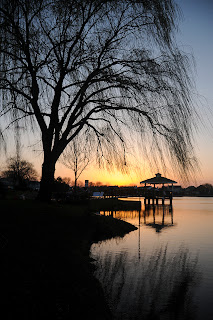To begin with, Griswold has some general observations about the way various illustrators have chosen to show "Beauty and the Beast". It is an unusual tale and would be challenging to present artistically because of the lack of specific descriptions in the text. The illustrator has to decide how to portray a woman who represents beauty itself, and a man/animal hybrid that is beastly and hideous, yet the audience can come to know and love like Beauty does. Though there would be many ways to show the Beast, nearly universally, illustrators have chosen to give the Beast clothing, to make him bipedal (to transform an animal that would normally walk on all fours to an upright, walking form), and to represent his humanity by his fine surroundings.
But after that, illustrations of the Beast tend to fall into one of two categories: those that were meant as a romance, and those that were meant for children. Those meant as a romance, such as the versions illustrated by Eleanore Vere Boyle and Edmund Dulac, show a more frightening, animal-like Beast. Vere Boyle's walrus-like creature is "so devoid of human features that he is striking in his complete 'otherness' ".
Dulac's characters are Orientalized:
Yet illustrations of the Beast in stories intended for children fall somewhere between inoffensive and downright comic or cute.
Jessie Wilcox Smith
Margaret Evans Price
I highly recommend viewing a larger version of the image above, such as on this site. Crane's illustrations are filled with details that keep the eye moving and drinking it all in, but also some symbolism I never noticed before. In this centerfold illustration, there are numerous references to animals (lion's heads and claws on the center couch, leapord skin at their feet, bird legs holding up the middle table). To the left behind Beauty are various instruments and music references, which indicates that "music soothes the savage beast." Again, you can barely see it here, but right behind the Beast's head is a drawing of Cupid on the wall, a reference to Cupid and Psyche.
Griswold also suggests that Crane imbued sexual meaning into his illustrations of this story. In this same picture, the gaze of Beauty and the Beast appear to be on each other's genitals , and somehow the lace on Beauty's sleeve and the Beast's hat, which hide the genitals, serve to draw your attention to them.
And in this drawing:
Griswold says that the monkey page who seems to be winking with the reader and the illustration of Eve consorting with the serpent on the wall are also clues to what has happened between Beauty and the Beast. But I don't know of any version of the Bible where Eve's "consorting" with the serpent is the kind that Griswold is implying here...
At first I thought these sexual readings of the illustrations were stretching it a bit too far. But Griswold says Crane kept it ambiguous intentionally, to defend his own innocence, which still sharing an inside joke with the adult readers. Also worth noting: in the first Crane image and the one directly below, the Beast's sword is shown hanging between his legs, not beside:
And in this famous scene, right before the Beast transforms, Beauty's one leg is hidden, leaving you to wonder if she is really on top of the Beast:
Griswold also says the expressions on the monkey's faces indicate that they were shocked to find their master and mistress consorting with each other in such a way, but I always thought they were showing their concern for the fact that the Beast was dying. So I don't know, Crane may or may not have been intentional about sexual references, the biggest question in my mind about this last picture is: how did Beauty's hair go from extremely dark brown to red all of a sudden?













